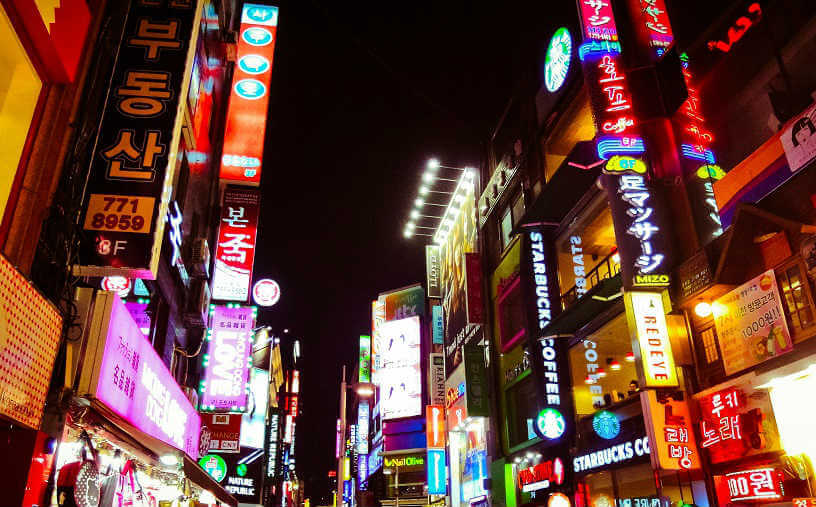Overview of Seoul, South Korea

If the fearsome border doesn’t scare you away, the Korean Peninsula has many dazzling sights to offer. Ancient meets modern in South Korea’s capital city. See where you should plan to go on your next South Korean holiday.
Things to see and do
Gwangjang Market
A market frozen in time, Gwangjang (also spelled Kwangjang) offers a fabulous array of fabrics and second-hand clothes. Visit in the evening to see this quiet market morph into Seoul’s largest food alley (also called a maokjagolmok), with more than 200 stalls, each specialising in its own dish. Try the crispy nokdu bindaettok or a bowl of bibimbap.
Changdeokgung
Catch a glimpse into the heyday of Korea’s Joseon palaces at Changdeokgung. This palace, like all other Joseon palaces, has a mountain behind it and a small stream in front. Though it’s not used to house the royal family or government offices anymore (government offices are nearby and the royal family lives further back in the woodland), by peering inside the old palace’s windows, you can get a look at how the Korean elite once lived.
N Seoul Tower
One of the city’s most iconic sights, N Seoul Tower offers a panoramic view of the city. Ascend the tower in the evening to catch sunset views and see the sky turn to stars. Eat in the budget food court at ground level or enjoy a meal at the elegant Italian bistro one floor up. Go further up in the tower for more fine dining options.
Noryangjin Fish Market
Catch a glimpse of Korean’s dish of choice —fish— at this iconic market. From crabs to rays to shellfish or more exotic species like sea cucumbers and sea squirts, all animals are on display here and available for purchase. Come here to enjoy the wildlife or get recipe ideas to try on your own.
Seasonality
Though the high season runs from June to September, this is actually not a very nice time to go. Be prepared for sweltering heat, heavy rain and large crowds. For a more palatable experience, visit between May and October. From late spring to early autumn, the countryside turns from lush, vibrant greens to reds and yellows. The low season lasts from November to April and is quite cold and snowy. If you wish to go skiing (with the proper travel insurance for skiing, of course) or visit the museums and galleries, this is a nice time to visit.
Essential information
- Australian travellers must fill out a 90-day entry permit upon arrival in South Korea.
- A recent Middle East respiratory syndrome coronavirus or MERS-CoV outbreak in South Korea has affected the region. As of June 2015, the outbreak had not been contained. While SmarTraveller lists the safety threat to Australians visiting the Republic of Korea as minimal and there have been no official travel restrictions, those visiting the country should be aware of the symptoms of MERS and understand how it may exacerbate any pre-existing medical conditions.
- There are no special vaccination requirements for visiting South Korea, but Australians may want to consider vaccination against hepatitis A and hepatitis B.
- Avoid the tap water, as it has contaminants Australians are often not used to and may make you sick.
- If you plan to visit the country, follow the geo-political issues in the country carefully. While no major issues have ensued since the Korean War in the 1950s, North Korea is considered to be as a mysterious and volatile nation. Often issues of geo-political conflict are not covered in an international travel insurance policy, so remember to read your travel insurance product disclosure statement (PDS) carefully.
Image courtesy of Flickr user Michael Howe-Ely; cropped from original
Planning a trip?
Discover Our COVID-19 Cover
To find out what our current* benefits do – and don’t – cover, please read:
Plus, for helpful destination-based COVID-19 information, don't forget to check the COVID-19 Travel Risk Tool before and during travel.
*The cover information contained on the above pages refers to Cover-More policies sold on or after 26 June 2023. For cover information on policies sold prior to this date, please read the relevant PDS.